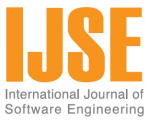IJSE Special Issue on Software Application Development
This special issue of the International Journal of Software Engineering (IJSE) presents state of the art research on current practices in software application development. It is motivated by a guiding theme on effort estimation and development cost; resource management; and verification. This issue presents invited papers that were presented by prominent researchers and professionals in the SE and other related tracks of the 2011 International Conference on Information Technology: New Generation (ITNG). These papers were initially peer reviewed by the tracks’ reviwers and the Track Chairs. Extended versions of selected papers were again blindly reviewed by experts in the field. In addition, this issue includes papers, solicited through general call for papers, addressing current issues in effort estimation and the role of quality attributes, and their relationships, in development cost.
The quality of the underlying software processes and methodologies is essential for the success of software development. The 2011 ITNG SE and related tracks provided researchers and practitioners a forum to present and discuss current ideas and experiences in SE. These tracks received a wide range of research papers addressing current practices in SE including experience reports in application development, surveys of methods and techniques, and reports on tool development. The presented work covered different SE research areas and is aimed to improve SE processes, methods, and technologies.
The quality and relevance to current issues and challenges in application development make selected papers of interest to researchers and practitioners. Through their work, the authors have demonstrated valuable contributions to SE research. Their work includes an interactive approach to information resource management; using formal notations for functional program verification; the role of software metrics in application development in small organizations; effort estimation using Voice Response Software model; and using the relationship between quality attributes to gage the overall application quality and cost development.
We would like to extend our sincere appreciation to the reviewers who contributed to this issue in a timely manner given the tied schedule. The quality of their reviews and feedback are invaluable. We also thank the authors for accepting our invitation and taking the time and effort to extend and revise their submissions for consideration to this issue. We also would like to extend our gratitude to IJSE Editor-in-Chief and the Editorial Office staff for giving us the opportunity to compile this special issue. Their encouragement and support are invaluable.
